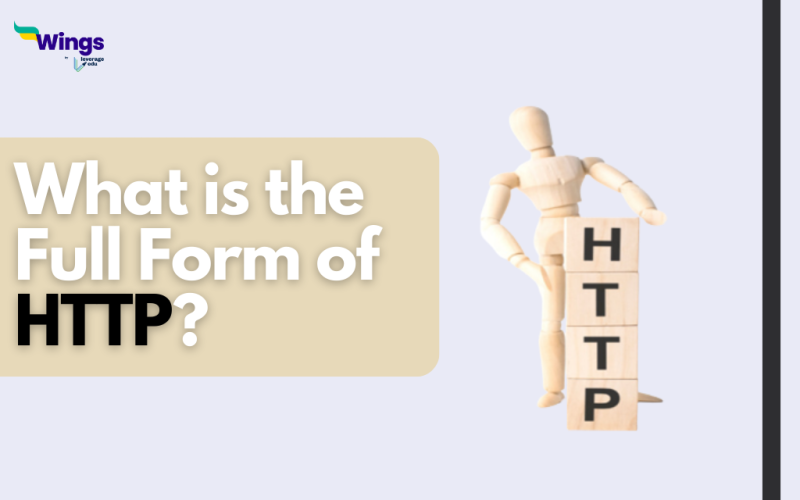The HTTP full form is Hypertext Transfer Protocol. It is a collection of guidelines for sending files over the internet, including text, pictures, sound, video, and other multimedia assets. User starts using HTTP as soon as they open their web browser. The TCP/IP protocol family, which serves as the internet’s building block, is built upon by the application protocol HTTP. Read below to learn more about HTTP full form.
What is Hypertext & How Does it Work?
A hypertext is a text that includes a link to another website. If a reader clicks on a word on a website page and it redirects to another website page, it signifies that the user has clicked on a hypertext link.
When a user attempts to access a certain website or file by entering a URL into his Internet browser, the browser creates an HTTP server. It forwards it to the URL-specified Internet Protocol Address (IP Address). The protocol collects data from the server and returns to the customer the desired web browser. The user must include HTTP in front of their page address.
Also Read – What is the Full Form of TCP/IP?
Features of HTTP
HTTP is an IP-based communication protocol for delivering data from server to client or vice versa. It has the following characteristics:
- The server handles a request raised by the client, and the server and client only know each other for the current request and response period.
- Any sort of content can be exchanged as long as the server and client support it.
- Once data is transmitted, the servers and clients are no longer connected.
- It is a request and response protocol that is based on the needs of the client and server.
- It is a connectionless protocol because after a connection is terminated, the server forgets everything about the client and the client forgets everything about the server.
- It is a stateless protocol because neither the client nor server expects anything from the other yet can still communicate.
Must Read: What is the Full Form of HTML?
Pros and Cons of HTTP
Like everything else in the world, HTTP (full form hypertext transfer protocol) has its own set of advantages and disadvantages. Check them below:
Pros
- HTTP speeds up data delivery across a browser database.
- Mapping internet protocol addresses to more readily identify names has made the World Wide Web financially viable.
Cons
- HTTP is slower than most other native protocols.
- Individual privacy can be jeopardised if a user does not encrypt data transferred via HTTP.
Must Read: What is the Full Form of USB?
How does HTTP Work?
- Whenever we want to open any website, we open the browser and type the URL such as www.xyc.com.
- The URL of your website is now sent to the Domain Name Server (DNS).
- The DNS checks records of the URL in its database and then returns the IP address to the web browser corresponding to the URL.
- Finally, the browser is now able to send requests to the server.
- Once the server sends the requested data to the client, the connection will be closed.
Also Read – What is the full form of HTTPS in Computer?
What is an HTTP Request?
An HTTP request is simply the information or data required by Internet browsers to load a website. This is known as an HTTP request.
There are several pieces of common information typically found in all HTTP requests. They are outlined below:
- HTTP Version
- URL
- HTTP Method
- HTTP Request Headers
- HTTP Body
HTTP Request Headers
HTTP Request Headers are like information storage in the form of key-value pairs and are essential for providing crucial client information, among other things.
HTTP Request Body
The HTTP request body holds the information that needs to be transferred. It contains the data or information that the browser will receive.
HTTP Method
HTTP methods are just HTTP verbs. Despite the existence of numerous HTTP methods, the most frequently used are HTTP GET and HTTP POST. These two methods are predominantly utilized in HTTP scenarios. In an HTTP GET request, the browser receives the information in the form of a website.
Popular Full Forms
We hope this blog has helped you understand the http full form and everything related to it. If you want to know more, find the 300+ full forms list on our blog. In the world of short forms, you can rely on the Leverage edu page to know about more full forms like this! Connect with us study abroad experts to achieve your international dream today!
 One app for all your study abroad needs
One app for all your study abroad needs













